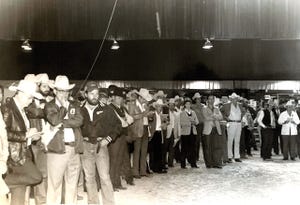March placements were the most anticipated number in last Friday's cattle-on-feed report, with pre-release estimates ranging from an increase of 4.3% to 11%. But, with 1.857 million head, gross placements were up only 2.7% from March 2009.
Writing in “In The Livestock Markets,” Darrell R. Mark, University of Nebraska-Lincoln ag economist, says that, of the major cattle feeding states, Kansas and Colorado led in percentage increases in March placements relative to last year (each up about 12%). However, the general trend toward more cattle on feed in the Northern Plains vs. the Southern Plains, due to cost-of-gain differences, is still evident in the placements and on-feed data, he says.
The combined placements of cattle in Nebraska, Iowa and South Dakota from October through June (measuring the placement of the calf crop that is typically weaned in October/November then placed on feed sometime during the next nine months) has steadily been increasing for the last 10 years. For the current year (October 2009 through March 2010), 30% of the calf crop was placed in feedyards in these northern states during one of the worst winters in history. This was up from 27.7% the previous year and 23.5% in October 2000 to June 2001.
The combined total of cattle placed in Texas, Oklahoma and Kansas from October through June fell below 50% in the current year (at 49.7%) for the first time in at least 10 years. With this being the trend for the past several months, the cattle-on-feed number in Iowa has grown substantially (up 13.2% over April 1, 2009). South Dakota also has an on-feed inventory 4.4% higher than last year and Nebraska's declined only 1%. While Oklahoma saw 3% growth in on-feed numbers and Kansas declined less than 2%, Texas, the largest cattle-feeding state, saw a 6% drop in total on-feed numbers.
At 10.769 million head on feed on April 1, total inventory in feedyards of 1,000 head or more was down 3.5% from last year and 5.8% lower than the previous five-year average. Still, the April cattle-on-feed inventory shrank as a result of both steady marketings and lower placements.
March marketings were 1.902 million head, 4.3% higher than March 2009, but since March 2010 had one additional marketing day, average daily marketings were nearly steady last month. The marketing pace relative to the size of the on-feed inventory continues to be relatively good and suggests the fed-cattle market is relatively current.
Marketings as a percentage of the on-feed inventory was 17.5% in March – the highest since September 2009 and 1.3 percentage points above March 2009. Relative currentness of the cattle-on-feed inventory is also noted by a 6.3% drop in the number of cattle on feed for more than 120 days on April 1, 2010, compared to last year. While the trend toward placing heavier yearlings on feed has necessarily dropped the size of that category, it has been evident in the data for more than a year, making the year-to-year comparison relevant.
Net placements (gross placements less other disappearance) were up only 2.2% due to a 10,000-head increase in other disappearance in March 2010 relative to last year (note, however, it was the second lowest other disappearance in the current series that began in 1996). Unlike the trend in recent months, the increase in placements was driven by larger-than-year-ago placements of lightweight calves and a decrease in heavier placements.
Placements of calves less than 600 lbs. were up 29.5%; 600- to 699-lb. placements were up 10.3%; and 700- to 799-lb. placements were up 1.5%. Placements of cattle weighing more than 800 lbs. were down 14.9%. This placement pattern suggests the fed-cattle market should stay relatively current in the near-term due to the drop in yearling placements, while the lower-than-expected increase in placements should lend support to the third-quarter, fed-cattle market.

.png?width=300&auto=webp&quality=80&disable=upscale)


